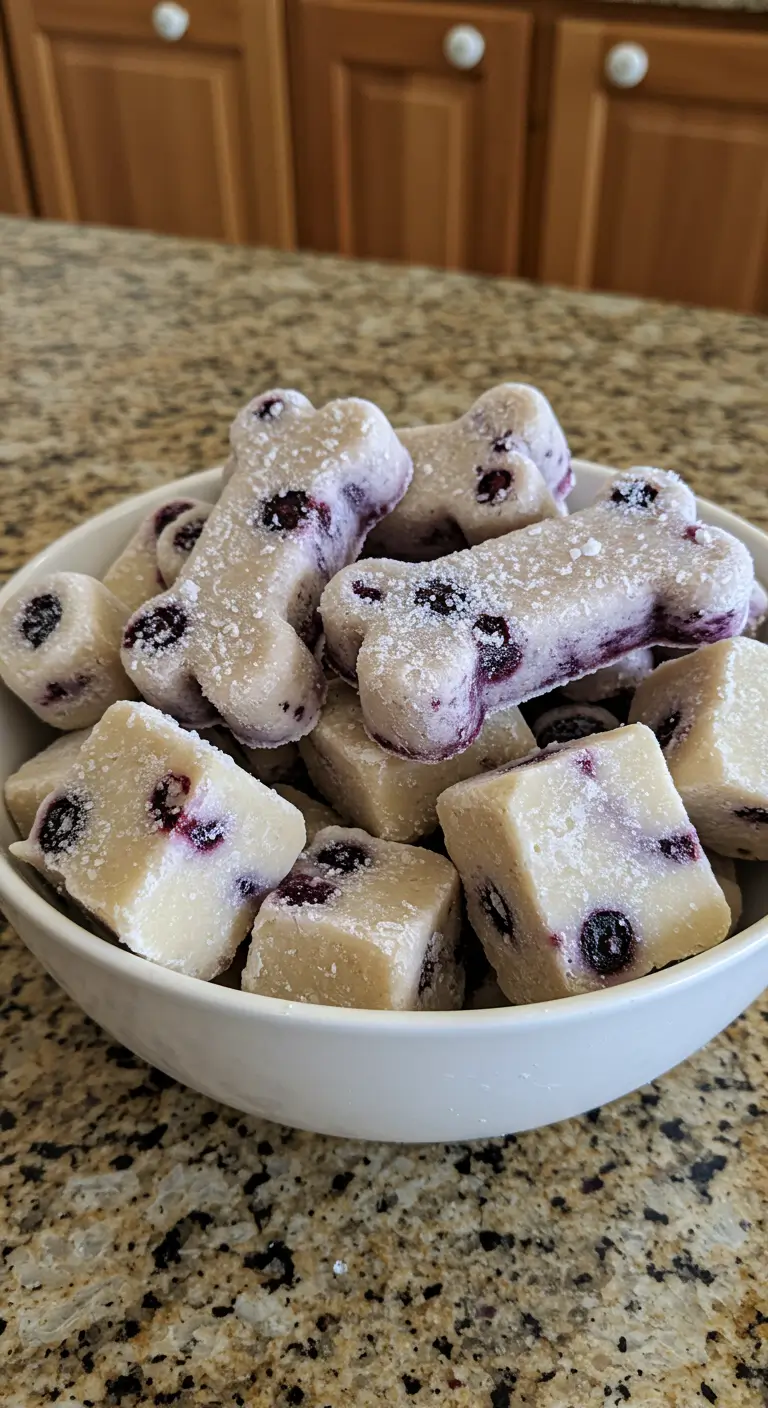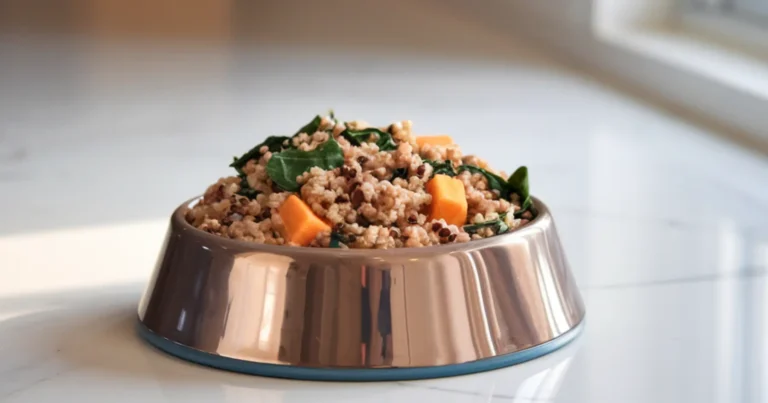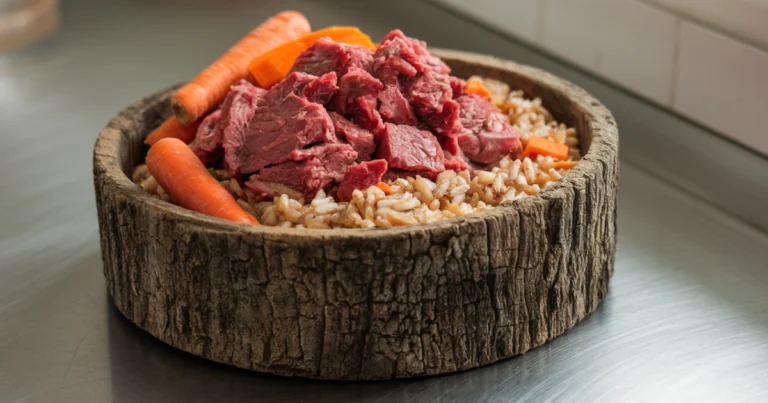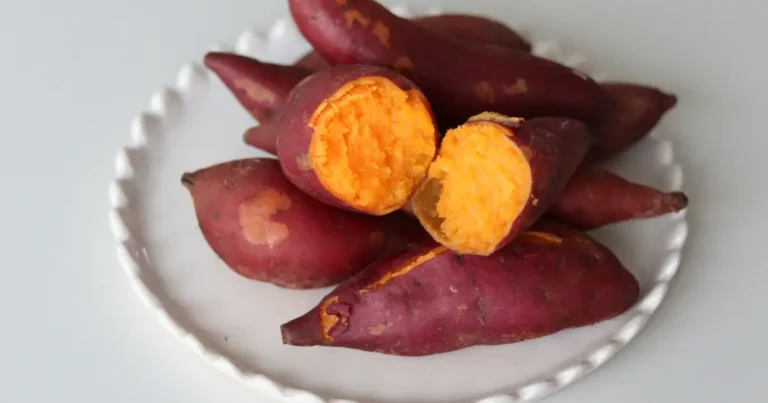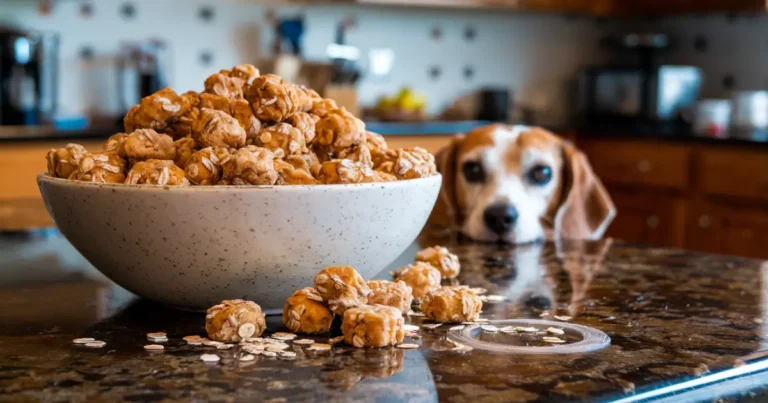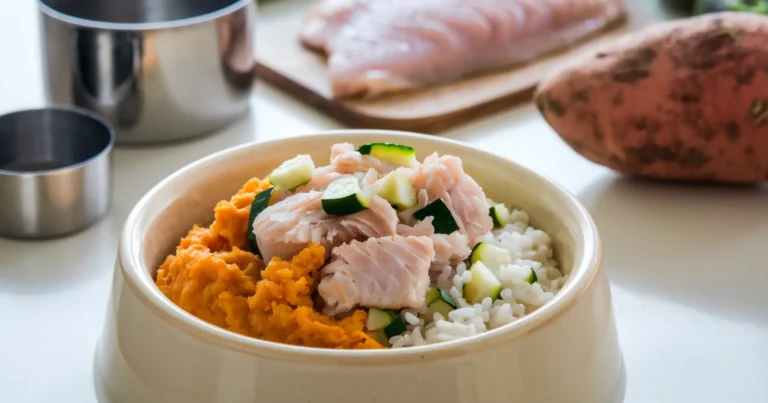Carrot Dog Treats: Amazing Crunchy Recipe That Works
Let me paint you a picture: Benji breathing directly in my face at 6 AM, and me trying not to gag from his morning breath. We’ve all been there, right? That special kind of dog breath that could peel paint off walls. I tried those expensive dental chews from the pet store, but Benji would inhale them in 0.3 seconds, and his breath still smelled like a garbage disposal.
Then my vet mentioned something that changed everything: carrots naturally clean teeth while dogs chew them, and parsley actually freshens breath. Mind. Blown. That’s when I started making these carrot dog treats, and honestly, it’s been a game changer. Not only does Benji’s breath smell better (I mean, it’s still dog breath, but now it’s tolerable), but he goes absolutely nuts for these crunchy vegetable dog treats. Who knew my picky beagle would become a veggie lover?
Table of Contents
Why Carrots and Parsley Are Perfect for Dogs
Here’s the thing about carrots that makes them basically nature’s toothbrush for dogs. When dogs crunch on them, the texture actually scrapes plaque off their teeth. It’s like those rigid dental treats, except it’s just a vegetable doing its thing. Plus, carrots are loaded with beta-carotene, which converts to vitamin A and helps with everything from vision to immune function.
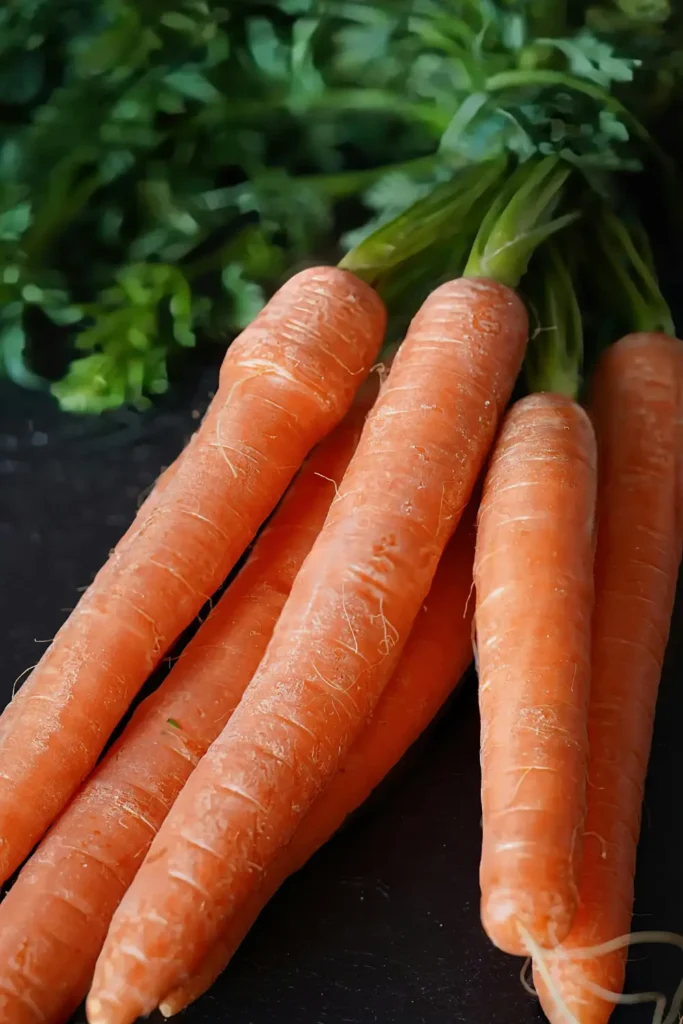
Parsley isn’t just garnish anymore, people. This little green herb contains chlorophyll, which is what actually neutralizes bad breath odors. Not masks them like those minty treats, but actually neutralizes them. Science is cool. Just be sure to use curly or flat-leaf parsley instead of spring parsley, which can be toxic to dogs when consumed in excess.
The combination creates healthy dog biscuit recipes that serve double duty: treats your dog loves AND dental health benefits. It’s like tricking your dog into brushing their teeth, except they think they’re getting spoiled. Sneaky? Yes. Effective? Absolutely.
Carrot Dog Treats Recipe
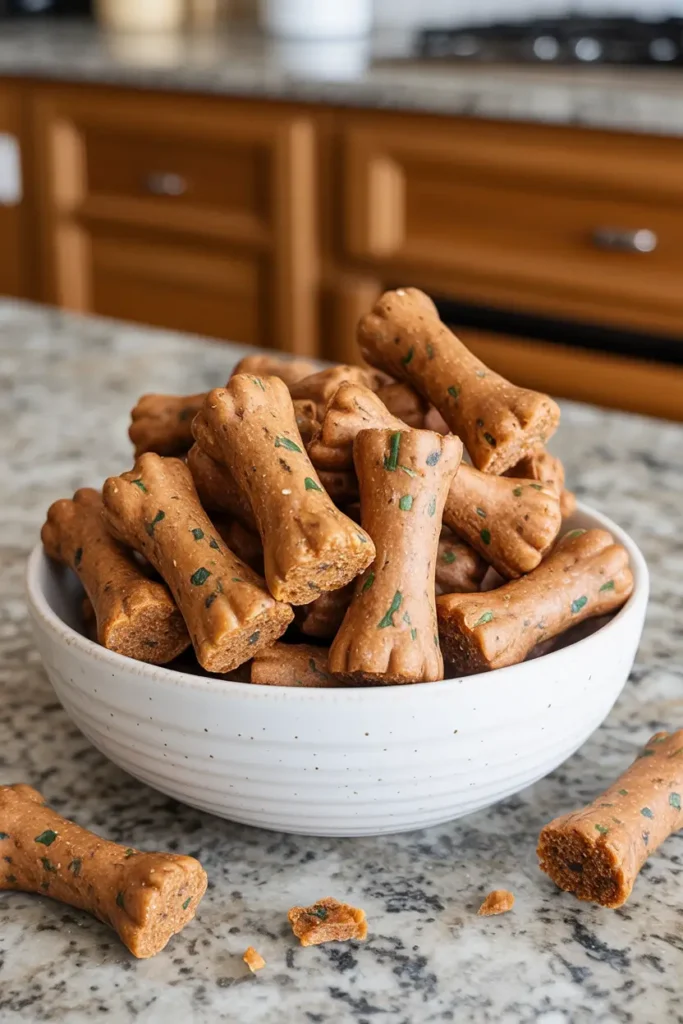
Recipe Overview
- Prep Time: 15 minutes
- Baking Time: 30-35 minutes
- Total Time: 50 minutes
- Yield: About 40 medium treats
- Storage: 10 days in an airtight container
- Difficulty: Easy (if you can grate a carrot, you can make these)
Ingredients
- Carrots: 2 cups, finely grated (about 3-4 large carrots)
- Fresh parsley: ¼ cup, chopped fine
- Whole wheat flour: 2 cups (can substitute oat flour)
- Eggs: 2 large
- Chicken or vegetable broth: ¼ cup (low sodium!)
- Oats: ½ cup (optional, for extra crunch)
Equipment Needed
- Box grater or food processor
- Sharp knife for parsley
- Large mixing bowl
- Baking sheets
- Parchment paper
- Rolling pin (or wine bottle, no judgment)
Step-by-Step Instructions
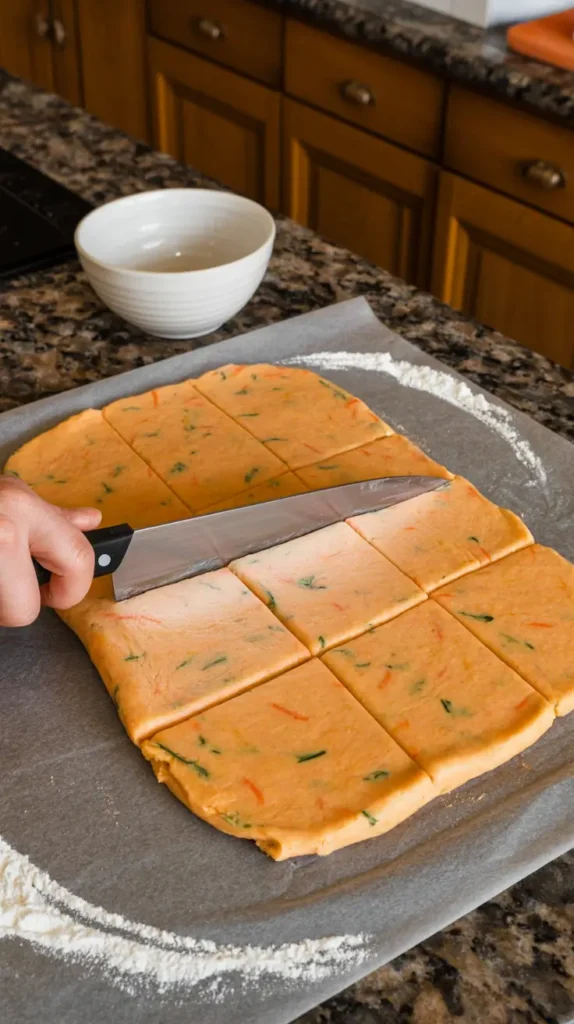
Step 1: Prep Your Veggies
Set the oven’s temperature to 325°F. Use parchment paper to line baking sheets. Use the fine side of a box grater to grate your carrots.
Pro tip: If you’re feeling lazy, buy pre-shredded carrots. I will not reveal. Finely chop the parsley because large pieces won’t disperse evenly.
Step 2: Mix Wet Ingredients
In your mixing bowl, beat eggs and broth together. Add the grated carrots and chopped parsley. The mixture will look like a weird orange salad. That’s exactly what you want.
Step 3: Add Dry Ingredients
Add flour (and oats, if using) gradually while mixing to form a stiff dough. It should hold together when squeezed, but not be super sticky. Add more flour if it’s too wet, or a splash more broth if it’s cracking.
Step 4: Roll and Cut
Roll out the dough to a thickness of about ¼ inch on a floured surface. Cut into shapes – I do simple squares because ain’t nobody got time for fancy shapes when Benji’s drooling on my feet. Size them based on your dog – smaller for little guys, bigger for the big boys.
Step 5: Bake Until Crunchy
Bake for 30-35 minutes, flipping halfway through. They should be golden brown and feel firm. For extra crunch (and better teeth cleaning), leave them in the turned-off oven with the door cracked for another 20 minutes.
Serving Guidelines
- Small dogs: 1-2 treats daily
- Medium dogs: 2-3 treats daily
- Large dogs: 4-5 treats daily
Remember, these are supplements to regular meals, not meal replacements. Benji once convinced my husband he hadn’t been fed and scored double treats. Don’t fall for the sad eyes!
Making Perfect Carrot Dog Treats Every Time
The Secret to Maximum Crunch
The key to getting that satisfying crunch is moisture removal. Grate carrots as fine as possible – chunky pieces hold water and make soggy treats. After mixing your dough, if it feels really wet, let it sit for 10 minutes. The flour will absorb some moisture.
Baking low and slow is crucial. Higher temps will brown the outside while leaving the inside soft. We want these carrot treats for dogs to be crunchy all the way through for maximum teeth-cleaning action.
Common Problems and Solutions
If your treats come out soft, you probably have too much moisture from the carrots. Next time, after grating, squeeze the carrots in a clean kitchen towel to remove excess liquid. I learned this after my first batch came out more like carrot mush cakes.
Treats spreading too much? Your dough is too warm. Before rolling, place it in the refrigerator for fifteen minutes. This firms everything up and helps them hold their shape.
Dog turning their nose up? Some dogs are weird about parsley at first. Start with less and gradually increase it. Or try adding a tablespoon of peanut butter to the wet ingredients. That usually wins them over.
Storage Tips That Actually Keep Them Fresh
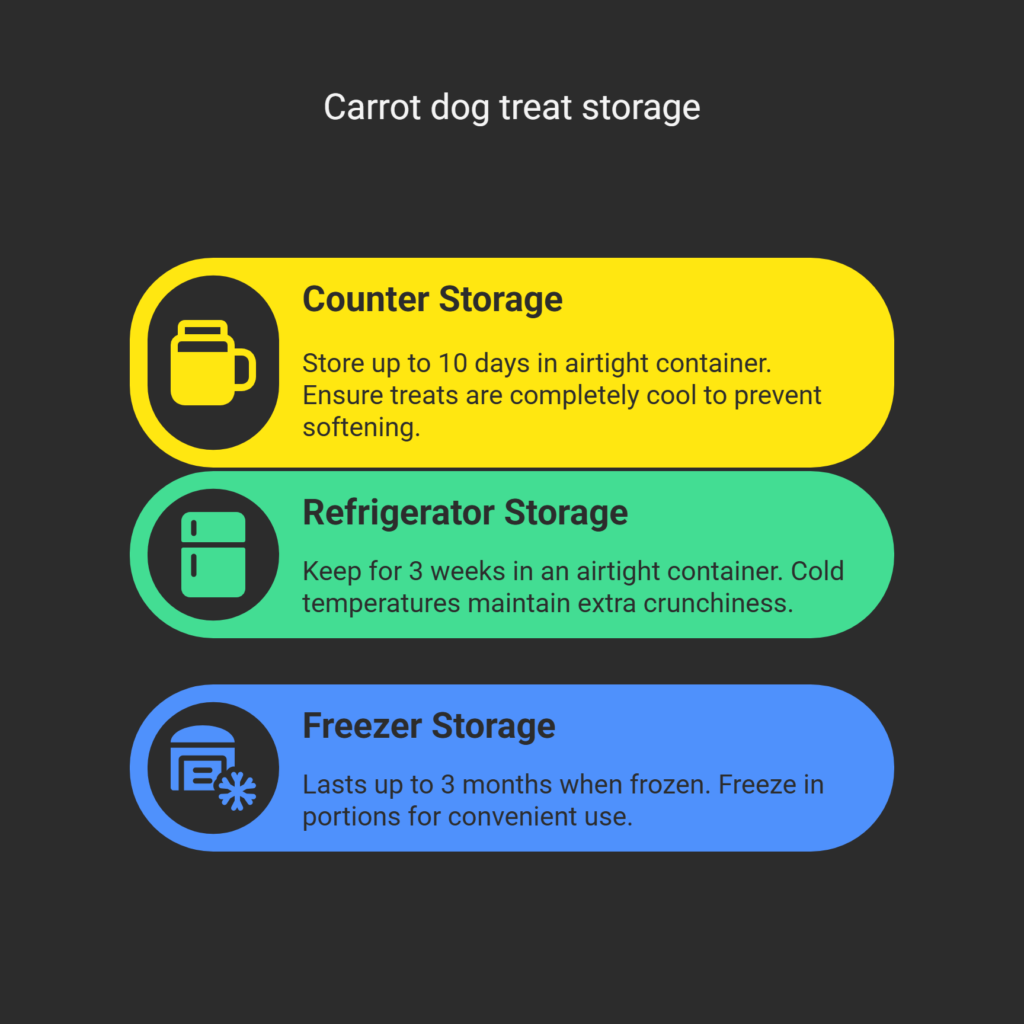
These carrot dog treat recipes stay fresh longer than you’d think, but proper storage is key:
Counter Storage: Up to 10 days in an airtight container. Make sure they’re completely cool first, or condensation will make them soft.
Refrigerator: 3 weeks in an airtight container. The cold keeps them extra crunchy.
Freezer: Up to 3 months. I freeze them in weekly portions so I’m never caught treat-less.
The enemy of crunchy treats is moisture, so those cute glass jars might not be the best unless you add a food-safe silica packet. I use an old cookie tin with a tight lid, and they stay perfectly crunchy.
Why Homemade Vegetable Dog Treats Win
Beyond the obvious breath improvement (seriously, it’s been life-changing), making your own vegetable dog treats means you control everything. No preservatives, no mystery ingredients, no wondering what “natural flavor” actually means.
Cost-wise, it’s ridiculous how much we save. Those dental chews Benji used to destroy in seconds? $20 for a bag of 12. These carrot treats? Maybe $3 for a batch of 40, and they last longer because they’re actually hard.
There’s also something satisfying about making treats that are genuinely good for your dog. It’s not just empty calories or filler – every ingredient serves a purpose. Carrots for teeth, parsley for breath, eggs for protein. Simple, effective, and Benji approved.
Branching Out to Other Healthy Treats
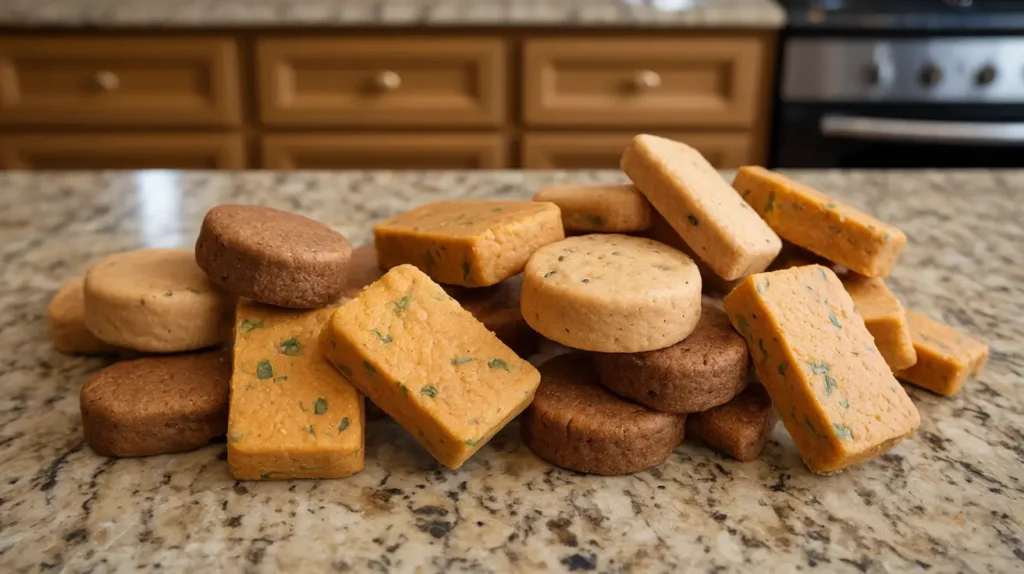
Once you see how easy these healthy dog biscuit recipes are, you’ll want to try everything. The 10 easy crunchy homemade dog treats guide got me started on this journey, and now I’m hooked.
If your dog loves these veggie treats, Beef & Sweet Potato Biscuits combine meat and vegetables for the best of both worlds. The sweet potato adds natural sweetness while the beef makes them irresistible. For fish lovers, Salmon & Flaxseed Crunchers pack omega-3s for shiny coats, though fair warning – they smell fishy while baking.
Speaking of variety, we’ve had great success with the pumpkin and oatmeal dog treats recipe for digestive health, and the easy apple cheddar dog treats for special occasions. If your pup is nuts about peanut butter like mine, the peanut butter and banana dog treats recipe is always a hit.
For training purposes, Apple & Peanut Butter Chips work great because they’re thin and break into tiny pieces. Chicken & Rice Crackers are perfect for sensitive stomachs, while Tuna & Cheese Bites offer a protein punch. And when I’m feeling fancy, Lamb & Rosemary Biscuits make Benji feel like he’s dining at a five-star restaurant.
Important Safety Notes
Before you rush off to make these carrot dog treats, let’s cover the important stuff:
- Always wash vegetables thoroughly, even if they’re organic
- Remove carrot tops completely – they can cause digestive upset
- Use flat-leaf or curly parsley only, never spring parsley
- Start with small amounts to test for allergies
- Store properly to prevent mold growth
Also, while carrots are great for teeth, they don’t replace regular dental care. Benji still gets his teeth checked at the vet, but these treats definitely help between visits.
Real Talk About Making Dog Treats
Can we be honest for a second? The first time I made these, I forgot to set a timer and burned the entire batch. The house smelled like burnt carrots for hours, and Benji looked at me like I’d personally betrayed him. But you know what? I tried again the next day and nailed it.
Making your own carrot treats for dogs isn’t about perfection. It’s about doing something good for your pup with your own hands. Some batches will be prettier than others. Some might be a little too brown around the edges. But I guarantee your dog won’t care if they’re not Instagram-worthy.
The joy on Benji’s face when he hears me grating carrots is worth every minute spent in the kitchen. He does this little tap dance and actually drools on the floor. It’s gross but also adorable. That’s the real reward here – knowing you’re making something healthy that your dog genuinely loves.
Key Takeaways
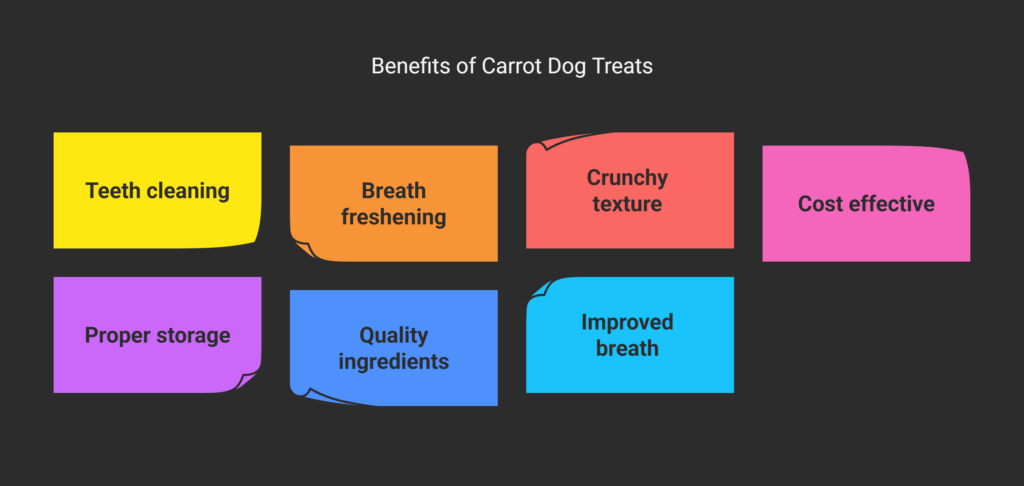
- Carrot dog treats naturally clean teeth while dogs chew
- Parsley actually neutralizes bad breath odors, not just masks them
- Low-temperature baking creates the perfect crunchy texture
- These vegetable dog treats cost way less than store-bought dental chews
- Proper storage keeps them crunchy for up to 10 days
- Every ingredient serves a purpose – no fillers or mystery stuff
- Your dog’s breath will actually improve (miracle!)
Final Thoughts
Look, I’m not saying these carrot dog treats will transform your dog’s breath into roses and sunshine. But they will make those morning face-licks significantly less traumatic. Plus, there’s something deeply satisfying about solving a problem (stinky breath) with something so simple (vegetables and herbs).
Since I started making these, Benji’s dental checkups have improved, his breath is bearable, and I’ve saved a fortune on those overpriced dental chews. Win-win-win. The best part? Once you get the hang of this carrot dog treat recipe, you can whip up a batch while dinner’s cooking. It’s become part of our Sunday routine – meal prep for humans, treat prep for Benji.
So grab some carrots, chop some parsley, and give these a try. Your dog will love you for it, and your nose will thank you every time they breathe in your direction. Happy baking, and may your treats be crunchy and your dog’s breath be fresh!
FAQs
Can I use baby carrots for these carrot dog treats?
Absolutely! Baby carrots work great and save you peeling time. Just know they have more moisture than regular carrots, so you might need to add a bit more flour or squeeze out excess water after grating. I’ve used them plenty of times when I’m feeling lazy. Pro tip: the pre-shredded carrot/cabbage coleslaw mix from the grocery store works too – just pick out any purple cabbage first.
My dog hates vegetables. Will they still eat these carrot treats for dogs?
Most veggie-hating dogs change their tune when vegetables are baked into crunchy treats. The eggs and broth add savory flavors that mask the “vegetable-ness.” If your dog is super picky, try adding a tablespoon of peanut butter or using beef broth instead of chicken. My neighbor’s dog wouldn’t touch vegetables until she tried these – now he begs for them.
How do I know if these healthy dog biscuit recipes are working for breath?
You’ll notice a difference within a week or two of regular treatment. The breath won’t be minty fresh (they’re dogs, not humans), but that rank, knock-you-over smell should improve significantly. The real test? Morning breath checks. If you can handle face-licks before coffee, they’re working!
Can I make these vegetable dog treats grain-free?
Yes! Replace wheat flour with almond flour, coconut flour, or chickpea flour. Almond flour makes them a bit more crumbly, but dogs don’t mind. Coconut flour absorbs more moisture, so use only 1½ cups instead of 2. I make grain-free batches for my friend’s dog with allergies, and they work perfectly.
Why are my carrot dog treats not crunchy enough?
Usually, it’s too much moisture or not enough baking time. Next batch, try: squeezing grated carrots in a towel first, baking 5-10 minutes longer, or leaving them in the turned-off oven for 30 minutes after baking. Also, make sure they’re completely cool before storing – they crisp up as they cool. If all else fails, lower your oven temp by 25 degrees and bake longer for maximum crunch.
References
- American Kennel Club – Carrots for Dogs
- PetMD – Fresh Breath Solutions for Dogs
- UC Davis Veterinary Medicine – Safe Herbs for Dogs
Your Dog Tried It? Drop a Review Below!
There are no reviews yet. Be the first one to write one.


